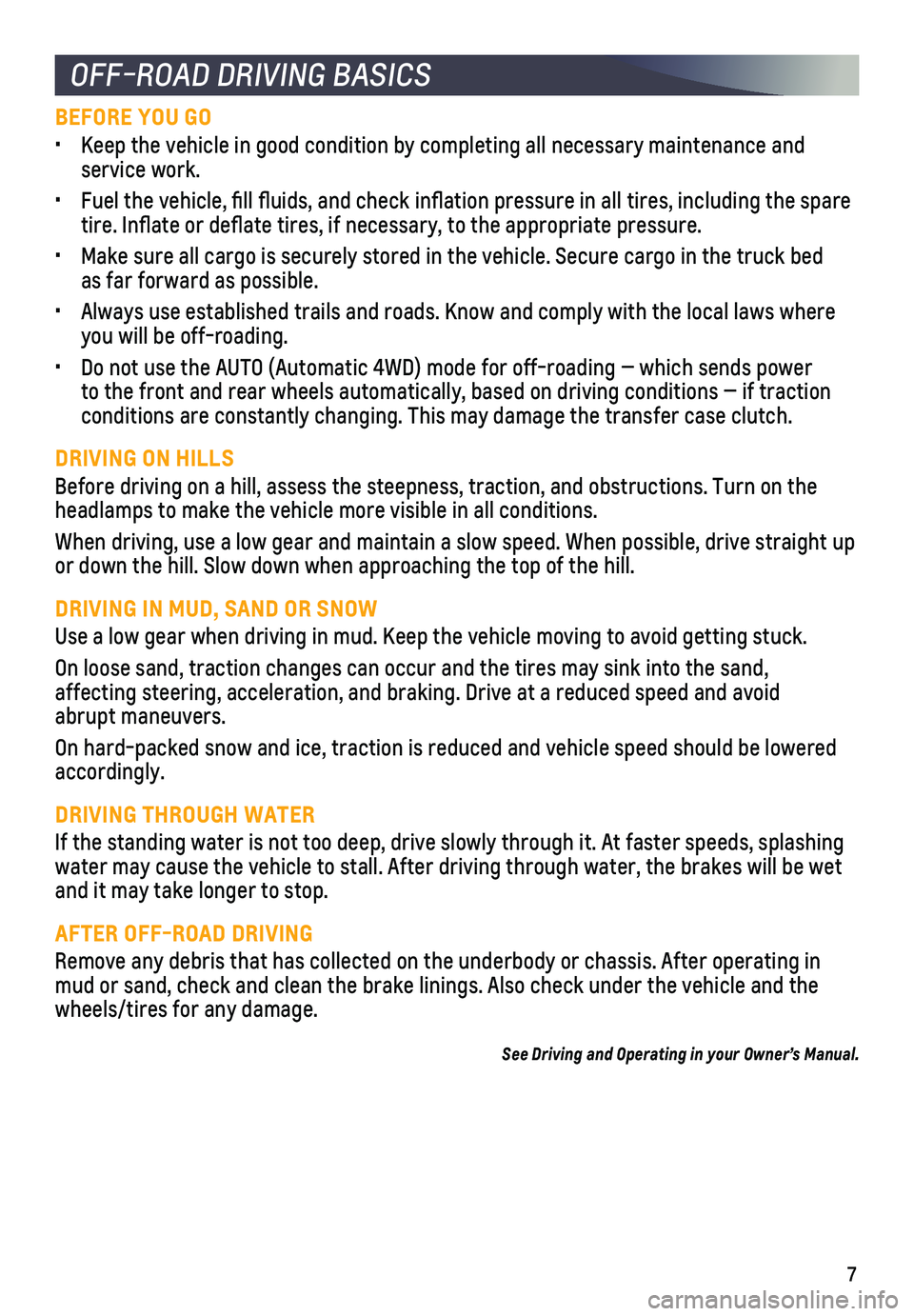7
OFF-ROAD DRIVING BASICS
BEFORE YOU GO
• Keep the vehicle in good condition by completing all necessary maintenan\
ce and service work.
• Fuel the vehicle, fill fluids, and check inflation pressure in all\
tires, including the spare tire. Inflate or deflate tires, if necessary, to the appropriate pre\
ssure.
• Make sure all cargo is securely stored in the vehicle. Secure cargo in t\
he truck bed as far forward as possible.
• Always use established trails and roads. Know and comply with the local \
laws where you will be off-roading.
• Do not use the AUTO (Automatic 4WD) mode for off-roading — which se\
nds power to the front and rear wheels automatically, based on driving conditions \
— if traction
conditions are constantly changing. This may damage the transfer case cl\
utch.
DRIVING ON HILLS
Before driving on a hill, assess the steepness, traction, and obstructio\
ns. Turn on the
headlamps to make the vehicle more visible in all conditions.
When driving, use a low gear and maintain a slow speed. When possible, d\
rive straight up or down the hill. Slow down when approaching the top of the hill.
DRIVING IN MUD, SAND OR SNOW
Use a low gear when driving in mud. Keep the vehicle moving to avoid get\
ting stuck.
On loose sand, traction changes can occur and the tires may sink into th\
e sand, affecting steering, acceleration, and braking. Drive at a reduced speed \
and avoid abrupt maneuvers.
On hard-packed snow and ice, traction is reduced and vehicle speed shoul\
d be lowered accordingly.
DRIVING THROUGH WATER
If the standing water is not too deep, drive slowly through it. At faste\
r speeds, splashing water may cause the vehicle to stall. After driving through water, the b\
rakes will be wet and it may take longer to stop.
AFTER OFF-ROAD DRIVING
Remove any debris that has collected on the underbody or chassis. After \
operating in mud or sand, check and clean the brake linings. Also check under the veh\
icle and the wheels/tires for any damage.
See Driving and Operating in your Owner’s Manual.
